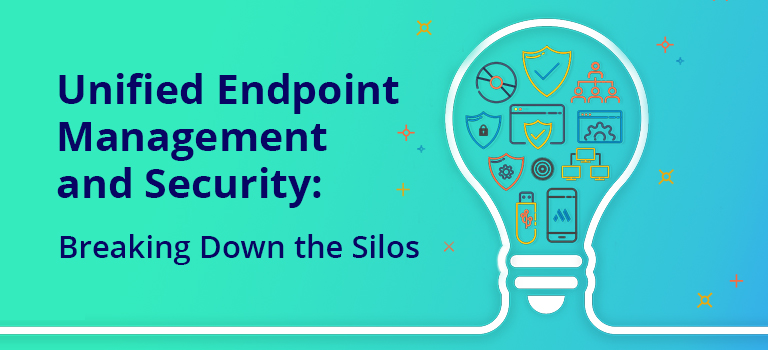Consider the case of a smart home. Smart home systems offer life safety monitoring using carbon monoxide detectors, smoke detectors, and flood sensors along with home automation technology such as smart locks, smart thermostats, and smart bulbs.
Now, imagine using a different tool for each of the above smart home capabilities—suddenly, smart homes don’t seem so “smart” anymore. Replace this “not so smart” home with your organization, the life safety monitoring with security tools, and the home automation with management tools, and you have a typical IT management and security environment.
You may be wondering, “Is it actually possible to unify endpoint management and security? We use so many tools just for security alone!” By the end of this article, you’ll learn how you can unify endpoint management and security and gain a solid understanding of the benefits of using a unified management and security solution.
How Many Tools is Too Many?
The National Vulnerability Database contains 150,000 publicly known vulnerabilities, many of which enterprises continue to fall prey. Similarly, OWASP’s list of the Top Ten Web Application Security Risks has hardly changed since its first iteration in 2003, yet according to this Comparitech article, 50% of internal web application vulnerabilities and 32% of internet-facing application vulnerabilities are considered high or critical risk.
Despite organizations using multiple tools for management and security, one of the biggest reasons for a data breach is still lack of sufficient security tools, as shown in the pie chart below.
Data obtained by management applications can be utilized by security applications to mitigate attacks. However, management and security applications often exist as disparate entities and the data they collect isn’t being correlated, meaning that in the event of a cyber-attack, organizations are starting off on their back foot.
According to this ComputerWeekly article, 50% of enterprises deploy a whopping six or more security tools, with 98% of organizations never being able to get a complete picture of security, resulting in poor cyber resilience. Not only does this approach result in weak cybersecurity, but 79% of security professionals claim the maintenance, upgrade, and renewal cycle for multiple products gives them a headache.
Benefits of Using a Unified Approach to Management and Security
Unifying endpoint management and security has a number of benefits to offer, including:
- Better visibility: Using a single application for both management and security offers better overall visibility.
- Reduced complexity and costs: Security professionals need only one application to handle all management and security tasks.
- Increased efficiency and productivity: Executing tasks takes less time as there is no need to switch between several different tools.
- Low learning curve: Since IT admins only need to learn to use one tool, it’s much easier to train employees to use it.
- Easy scaling: Eliminating endpoint management and security silos makes scaling easy because it’s just one single application that needs to be scaled—no more worrying about compatibility, implementation challenges, and operational inefficiencies.
ManageEngine Desktop Central is a unified endpoint management and security application that lets you manage endpoints of different types running on different OSs. It also handles application and browser security, vulnerability management, and data leak protection.
Get your free, 30-day trial of Desktop Central!
Acuthan Ramesh
Tags: Cybersecurity, Data, Data Security, Endpoint Management, Endpoints, InfoSec, Security, Smart Homes, Technology, Vulnerabilities


